24 things to do in Castelli Romani, Rome's secret alternative
When in Castelli Romani...

About an hour's drive southeast from Rome, the 17 towns that make up Castelli Romani are perched in the lush Alban Hills on the remnants of an extinct volcano. Each town boasts a unique character, rich history, captivating architecture and incredible food, while the comfortable temperatures, stunning views and cool breezes make it an amazing escape from the hustle and bustle of the city.
Click through this gallery to discover the 24 best things to do in Castelli Romani, Rome's secret sister...
1. Eat like an emperor
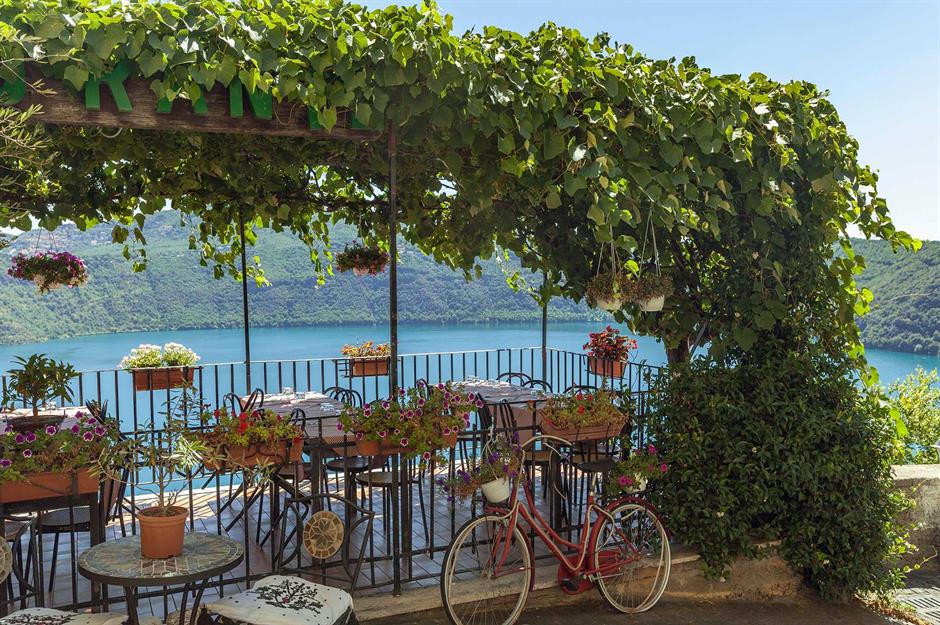
From tiny cafes tucked away in winding alleys to restaurants with jaw-dropping views, Castelli Romani’s eateries alone are worth the journey. And the region doesn’t just stick to conventional fare – Dopo Lavoro Ricreativo in Frascati uses locally sourced and foraged ingredients to serve up traditional food with a progressive twist, and craft their own naturally fermented wine and kombucha. Want dessert? Take a five-minute stroll around the corner to Greed Avidi di Gelato for some of the best gelato in Italy.
2. Hike through historic landscapes

Castelli Romani’s stunning landscapes provide an idyllic backdrop for exploration of ancient sites (and sights!). In Rocco di Pappa it is still possible to walk part of the via Sacra (Sacred way), a path dating back to the 7th century BC, while a visit to the ruins of the town's medieval fortress (pictured) offers sweeping views across Castelli Roman. At the Tuscolo Archaeological Cultural Park, explore the remains of the ancient Latin town of Tusculum – you'll find an impressively well-preserved Roman amphitheatre. Plan your explorations with the help of Visit Castelli Romani.
3. Explore the region’s smallest – and possibly prettiest – town
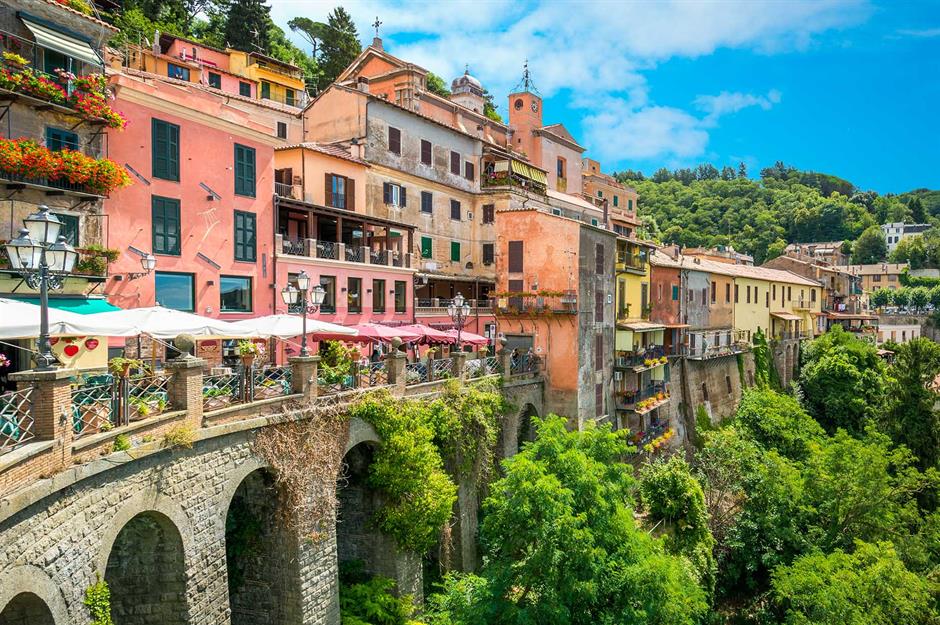
Nemi is a charming town of pale-pink buildings perched on the rim of the long-extinct volcano, overlooking the lake of the same name. Colourful shop awnings flutter along the picturesque main street, which leads to a 10th-century castle. A public fountain built into its walls spouts naturally sparkling water, made – so legend has it – from the tears of a nymph turned into a spring by the goddess Diana. But that’s not what makes it famous…
4. Get your teeth into Nemi’s famous strawberries

You can’t walk more than a few steps in Nemi without passing a stall or cafe selling these tiny wild strawberries. Locally grown and deliciously sweet, they’re often found dusted with icing sugar atop these traditional custard tarts. The people of Nemi are rightly proud of their produce and celebrate the fruit with an annual festival (more on that later). Indulging in a strawberry tart and a strong coffee while taking in the heavenly lake view is a must.
Love this? Follow us on Facebook for more travel inspiration
5. Discover Lake Nemi’s links to Emperor Caligula
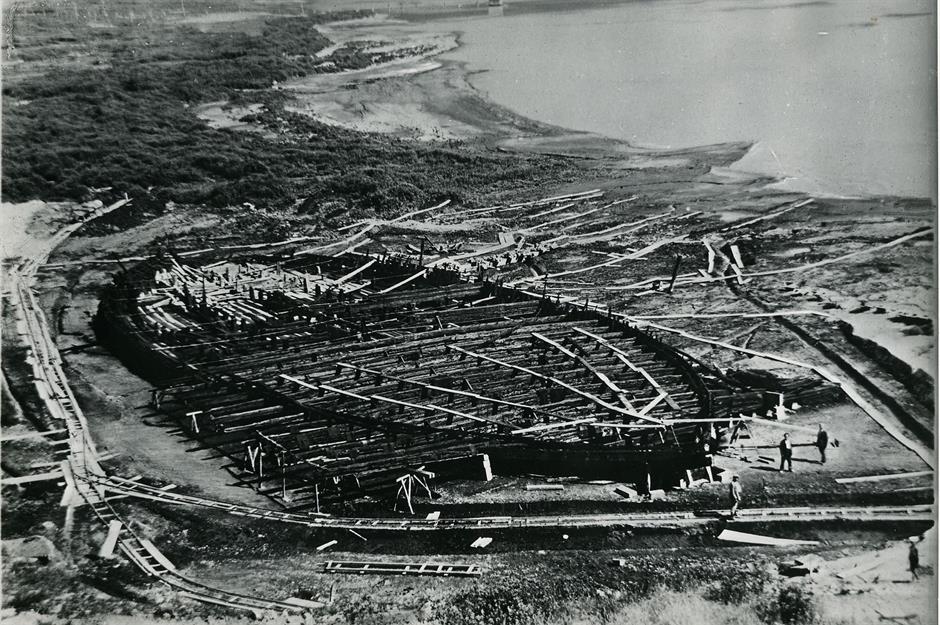
In 1929, Lake Nemi was drained on the orders of Benito Mussolini. His goal was to retrieve the lost pleasure barges of Emperor Caligula and, as this extraordinary photo shows, he succeeded. Two boats were pulled from the mud, the largest of which was 240 feet (73m) long – that's roughly the length of an Airbus A380. Tragically the boats, which are considered two of the most unique artefacts ever uncovered from the ancient world, were destroyed during the Second World War – but the Museum of the Roman Ships (Museo delle Navi Romane), on the shores of the lake, still tells their remarkable story.
6. Indulge your sporting passions against a stunning backdrop
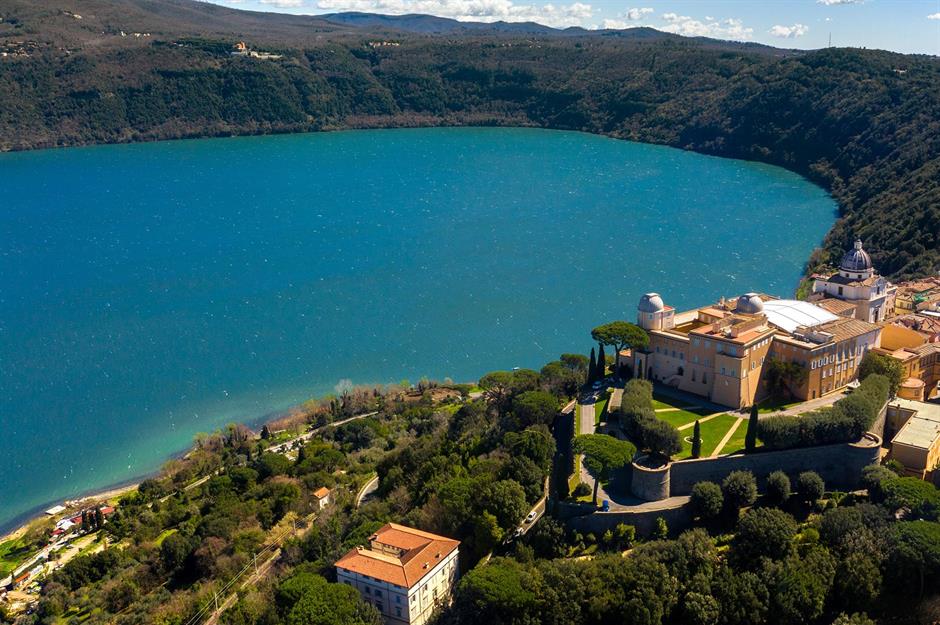
Cyclists and runners alike are drawn to this region for its rolling hills, while Lakes Nemi and Albano offer pristine waters for swimming, kayaking and paddle boarding. Equestrians can visit the Federal Equestrian Centre, nestled in an ancient volcanic valley surrounded by the peaks of the Alban Hills, or enjoy a leisurely ride around the lakes.
7. Marvel at Ariccia’s architectural wonders
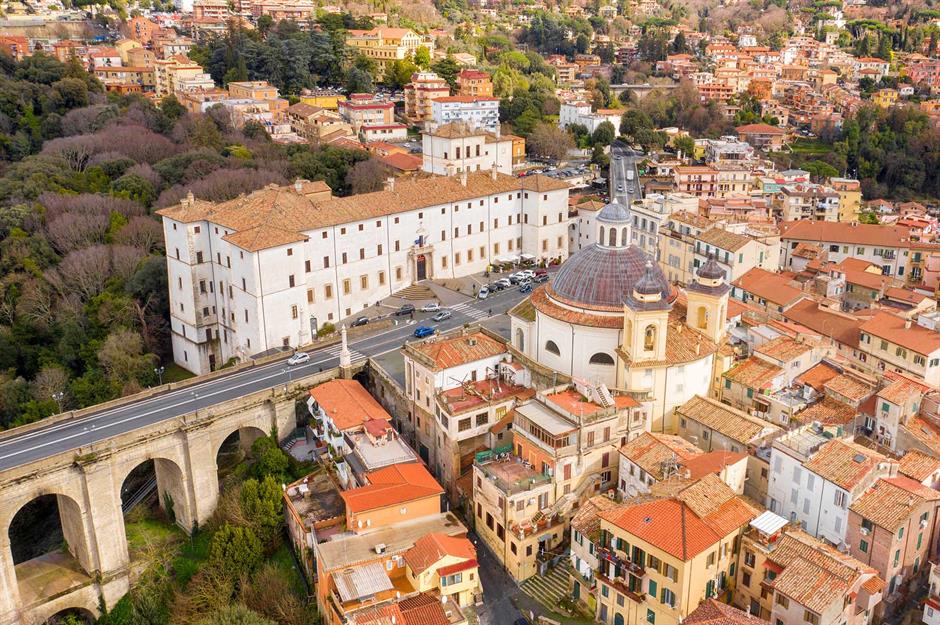
Situated along the via Appia (Appian Way), the first and most famous of the ancient Roman roads, the town of Ariccia is dominated by the Baroque square at its centre. Designed by Bernini in the 17th century, it houses the church of Santa Maria Assunta, which bears more than a passing resemblance to Rome’s Pantheon, which Bernini was restoring at the time. Opposite the church stands the imposing Palazzo Chigi. Built in the 16th century, and given an extensive facelift by Bernini, the palace now houses the museum of Roman Baroque, featuring an extensive collection of Baroque art.
8. Watch the world go by from a rustic restaurant
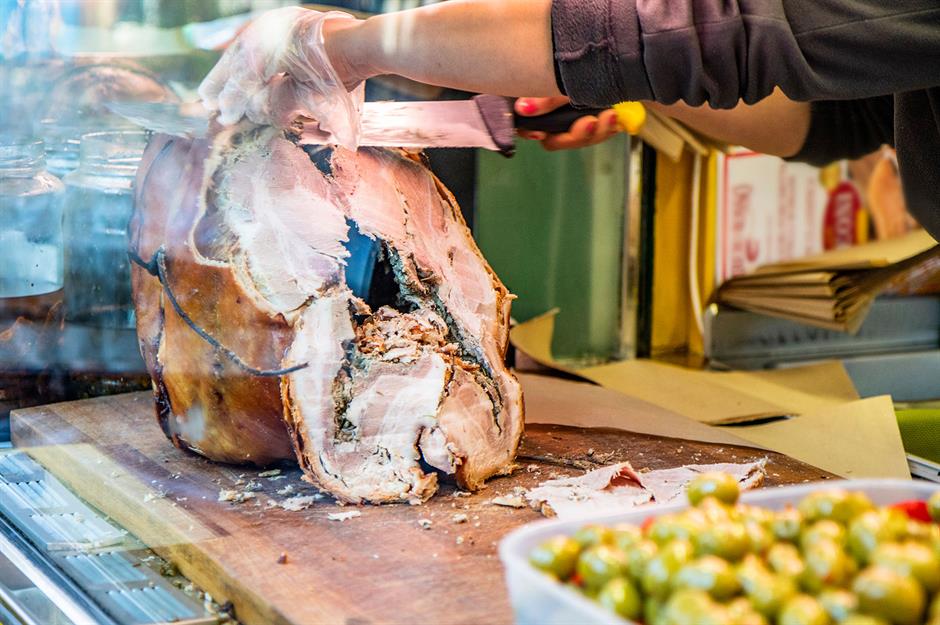
The town of Frascati may have given its name to the fraschette, the traditional taverns that dot Castelli Romani, but nowhere are they quite so admired as in Ariccia. The fraschette were once inns and cellars where workers and travellers could bring their own food as long as they bought a carafe of the local wine. These days, the food is the star. Ariccia’s famous porchetta – roasted pork – is served up at the wonderful Osteria Numero Uno alongside balls of ricotta drizzled in honey, grilled vegetables and deliciously al dente pasta.
9. Learn how to drink coffee like an Italian
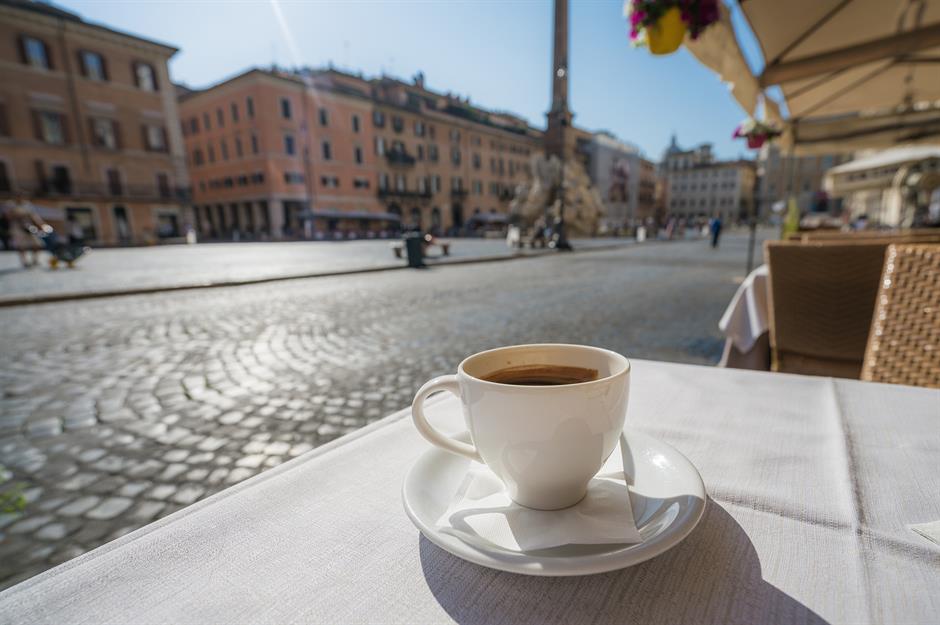
Coffee is an almost religious experience in Italy and it seems to taste better here than anywhere else in the world. To blend in with the locals, stay standing to drink your espresso, shoot it back quickly and never pay more than a euro or two. However, with views like these, you’ll be forgiven for sitting back and taking leisurely sips. As smooth as it is, coffee lovers and newbies alike might want to add sugar to help ease the transition from standard home-brew to the true espresso experience.
10. Uncover ancient wonders
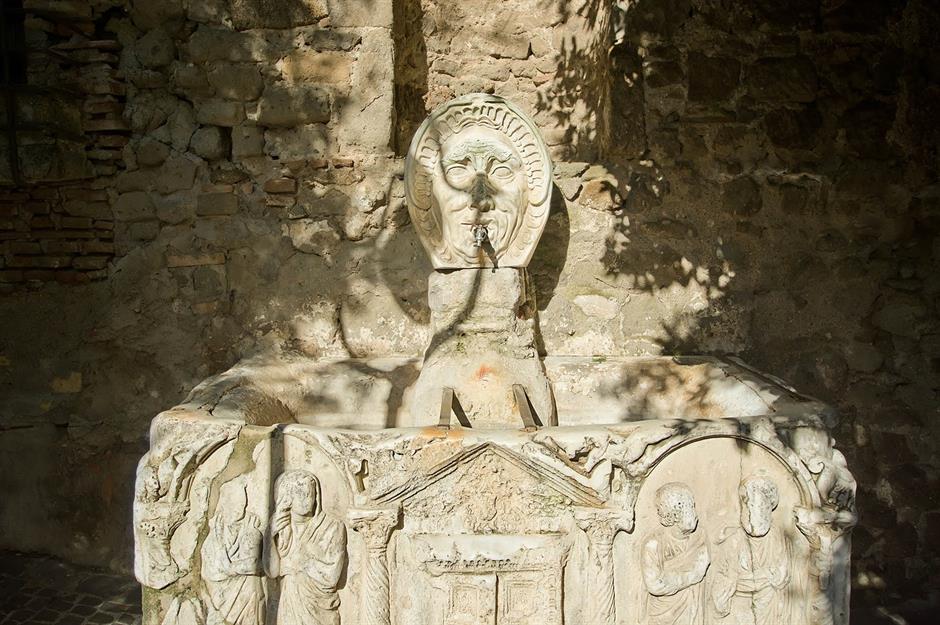
There's a lot of history to explore in Castelli Romani. In fact, it's hard to know which town to visit first. Lanuvio boasts the remains of a Roman temple, Velletri has a charming 14th century bell tower, while Albano has baths and a small amphitheatre. Visit all of these and you'll still only have scratched the surface of the rich history there is to discover in this region.
11. Summer like a pope in Castel Gandolfo
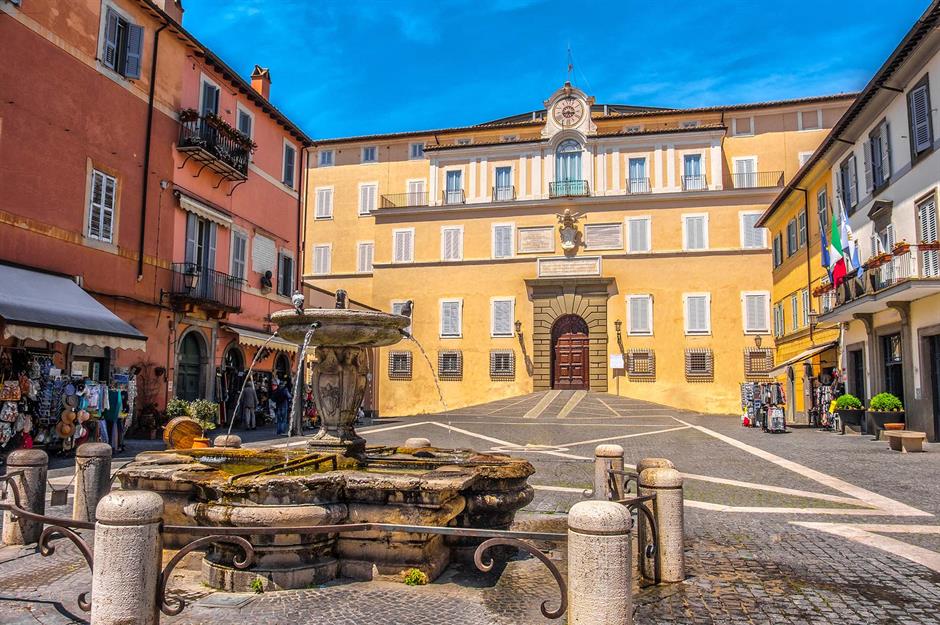
Until very recently, this imposing ochre building was the summer residence of the popes and drew crowds of pilgrims. Today, people flock to visit the Palazzo Pontificio (Papal Palace) museum and gardens, enjoy the hilltop town’s charming architecture and dine out on world-class food. The town's main square is lined with little bakeries and cafes, some of which have been owned by the same family since 1870. Handily, Castel Gandolfo has a direct train link to Rome.
12. Admire Lake Albano from afar… or dip a toe into its azure waters

The view over Lake Albano from Castel Gandolfo is unforgettable. The deepest volcanic lake in Europe, its waters are such an enticing shade of blue it's almost impossible to resist taking a dip. It has beaches for swimming, as well as boat and canoe tours which might just give you a glimpse of Roman columns hidden beneath the surface of the water. Lake Albano was the rowing and canoeing venue at the 1960 Olympic Games and the Italian national rowing team still trains on the lake today.
13. Learn how to make your very own mosaic
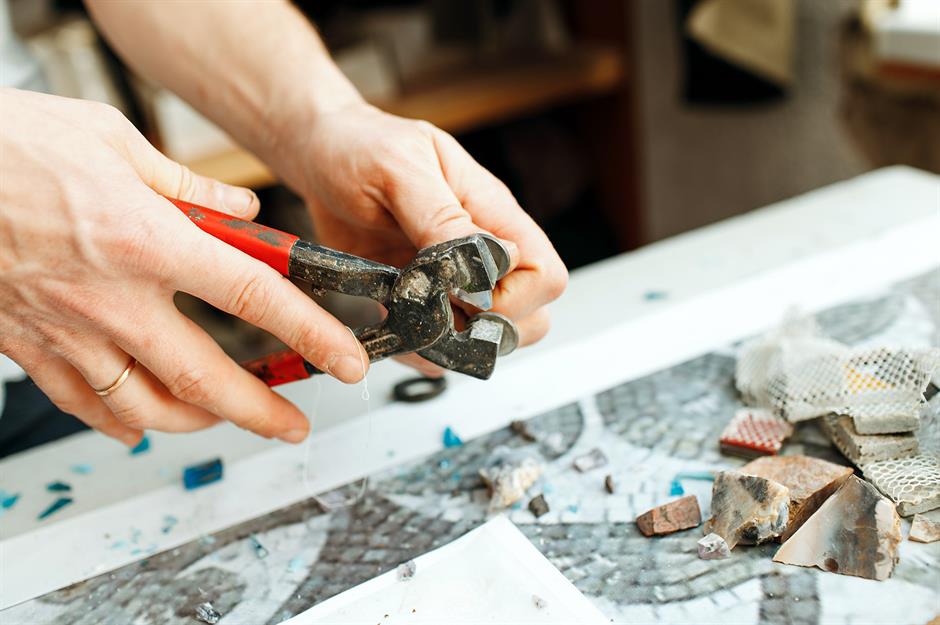
Mosaics old and new are a common sight in Italy, so as you wend your way through the pretty streets of Castel Gandolfo take the time to visit La Musa Mosaici. Much more than a shop, the artisans here create handmade mosaics for homes in Italy and beyond. Sign up for a workshop and learn how to create your own masterpiece using traditional methods that have barely changed in centuries.
14. Eat at an eccentric gem
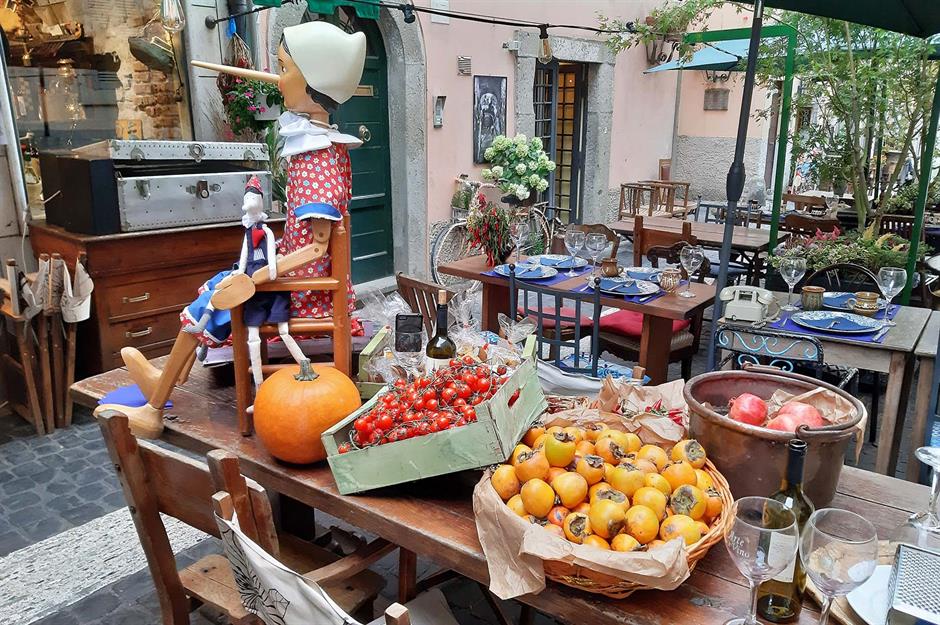
Arte e Vino in Castel Gandolfo is more than just a restaurant, it's an experience. The charmingly eccentric owner, Julio, has grown the popular spot from an antiques and wine shop into a restaurant and deli standing on both sides of the street. Each room is filled with collectable curios – antique tennis racquets dangle from the ceiling of one room, toy planes from another. Julio has even created a network of caves and tunnels beneath the street, where you can dine or simply explore. You'll stumble upon bottles of wine made from the grapes Julio grows nearby – which pair perfectly with the incredible cheeses he ages in the tunnels.
15. Descend into the underworld
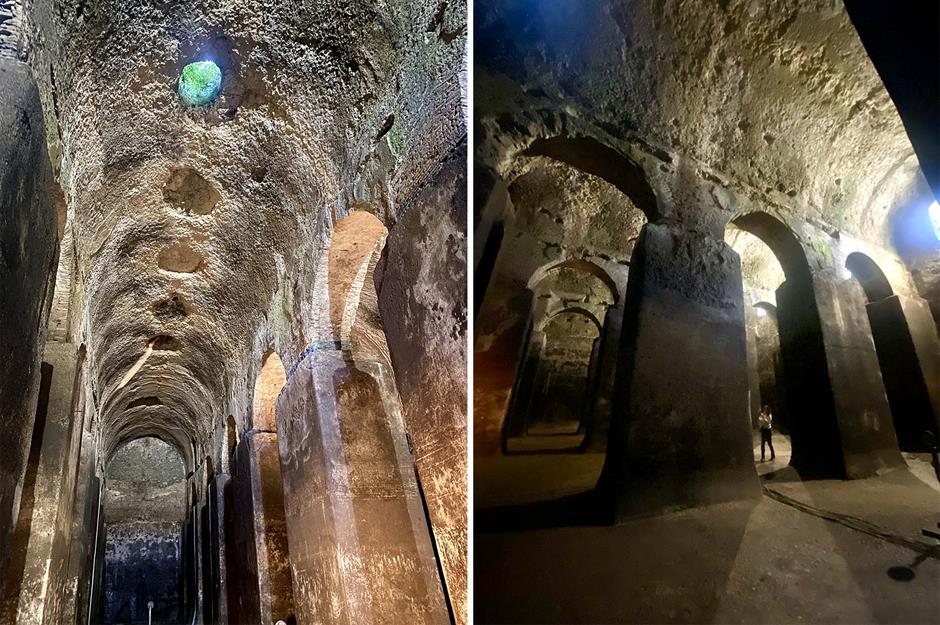
If underground exploration is your thing, head to Albano's Cisternoni di Albalonga,an extraordinary cathedral-like cistern built during the rule of Emperor Septimius Severus to provide water to his legions of soldiers. To book a visit, email the local tourist office ahead of time. For more subterranean delights check out the Catacombe ad Decimum in Grottaferrata, then travel on to Marino, a medieval town situated above an underground village where people sought refuge from Allied bombing during the Second World War.
16. Party like a local
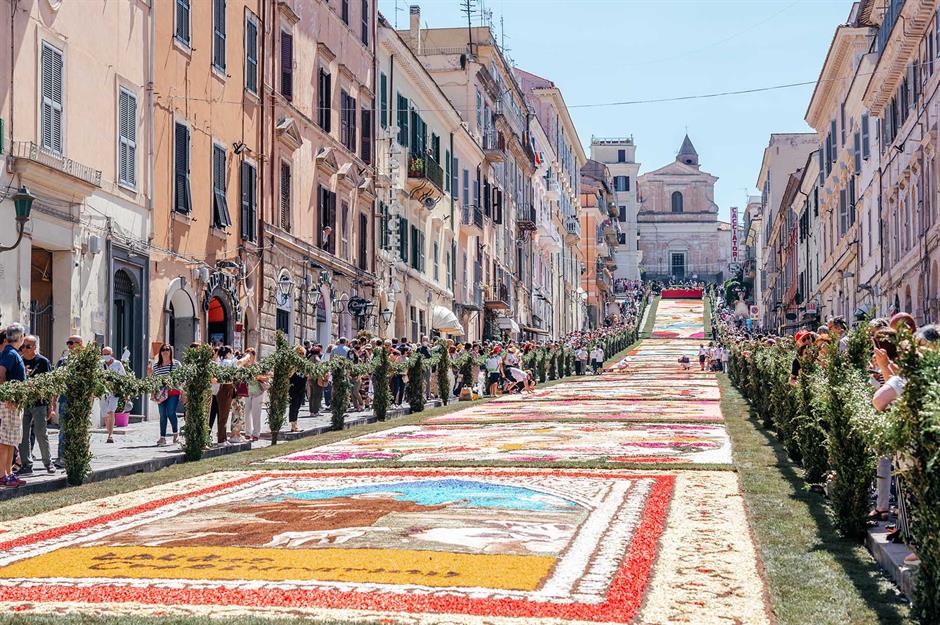
Annual festivals celebrate each Castelli Romani town and their signature products. In Lariano, it's porcini mushrooms. Nemi throws a strawberry festival, Castel Gandolfo is famous for its peaches and Genzano covers its streets in flowers (pictured). In Ariccia, porchetta is blessed outside the church before hundreds of free sandwiches are thrown into the crowd. But we think our favourite is Marnio, where the first weekend of October sees the town fountain spew white wine, free to anyone with a glass. Check out the festival itinerary at Visit Castelli Romani.
17. Enjoy some wine with a view

No trip to Italy is complete without a vineyard visit for a spot of wine tasting. At Tenimenti Leone, history meets cutting-edge tech as a range of carefully selected vines are expertly grown on ancient land only recently vacated by monks. At its centre is a medieval tower, with views of the rolling landscape beyond and the winery also makes delicious olive oil and honey. Organise an excursion with Wine and Dine Holidays to discover more of Castelli Romani's hidden restaurants and vineyards.
18. Spot wild animals in Castelli Romani Regional Park

While larger wild animals – including brown bears and wildcats – are more readily found in the nearby National Park of Abruzzo, Lazio and Molise, wolves and wild boar also reside in the ancient woodland that covers much of the Castelli Romani Regional Park and are occasionally spotted by keen-eyed nature-lovers. The park covers 37,000 acres and hosts wild orchids and birds of prey, as well as Roman temples and neolithic rock tombs.
19. Wake up to stunning views and centuries-old frescoes
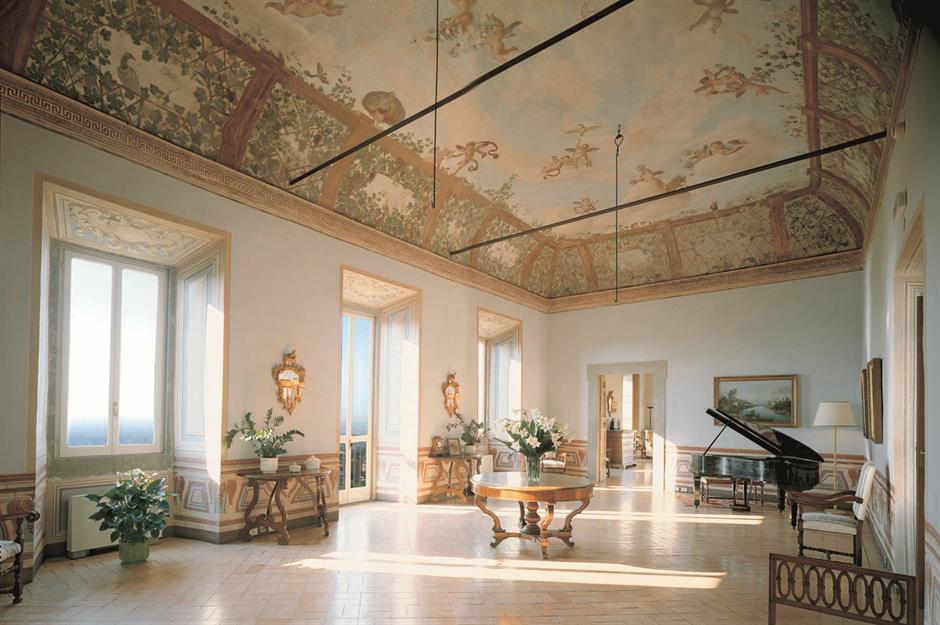
In the 16th and 17th centuries, 12 luxurious villas were built for Vatican cardinals to escape the city heat. Most are still private houses, but one is a 4-star hotel and the perfect place from which to explore both Castelli Romani and Rome itself. Built in 1580 and set in a pristine park, Park Hotel Villa Grazioli has a fantastic restaurant, views over Rome and a VR experience that will whisk you back in time. But it's the original frescoes in almost every reception room that really take your breath away. Amazingly, thanks to its position in Castelli Romani, it's at least a third cheaper than a similar 4-star hotel in Rome.
20. Explore, explore, explore

Luckily, it's easier than you might think to explore the 17 towns. Day tours with knowledgeable locals are an ideal way to get around and discover gems a guidebook might miss. They're also flexible, so you can tell your guide what you're interested in and they'll tailor your trip accordingly. If you want a little more freedom, you can hire a car or a driver and create your own itinerary. Most hotels also offer free shuttles to the nearest train station, so getting into Rome is hassle-free.
21. Catch the train into Rome
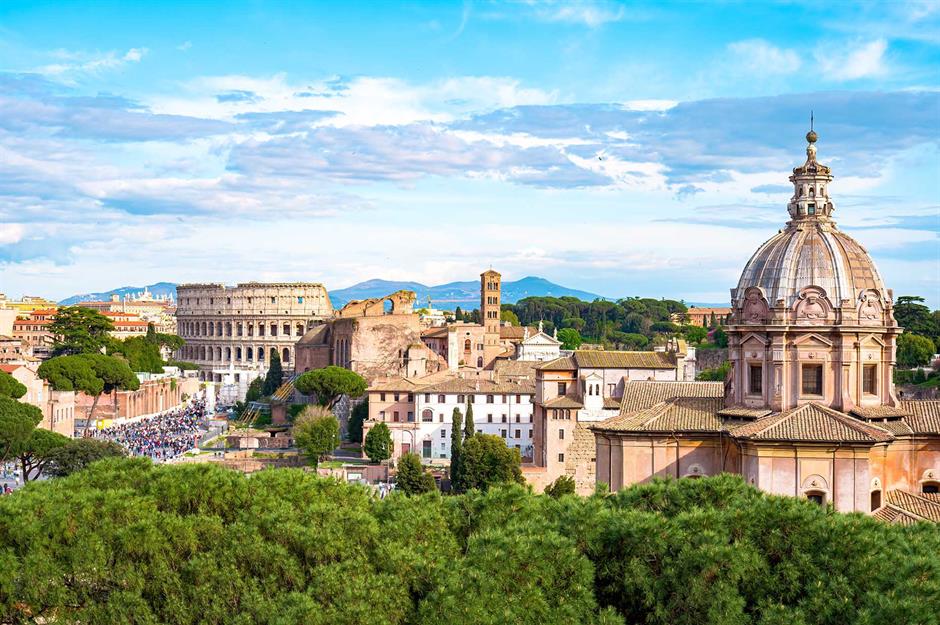
Train travel in Italy is a refreshing change from the UK or America. A return ticket from Frascati into Rome costs just €4.20 (£3.55/$4.50) per person, on a modern, clean train. Buy your ticket at the station or save time and buy online, then enjoy a pleasant 25-minute journey past olive groves and country villas. Rome train station is busy but well-organised, with plenty of shops and eateries, plus useful facilities like a bag drop. It's a long walk into the heart of the city, so unless you want to arrive sweating and tired, we'd recommend heading to the taxi rank.
22. Tour the treasures of the Vatican... without the crowds
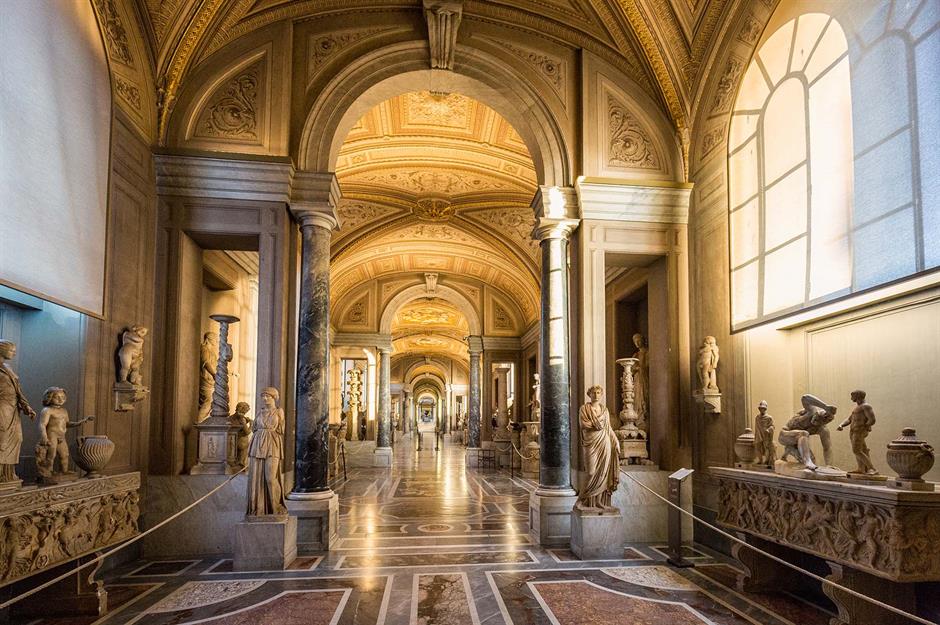
A trip to Rome isn't complete without a tour of the Colosseum or the Vatican museum. City Experiences runs tours of both and its special-access after-hours visit to the Vatican is a great way to skip the queues and beat the heaving crowds. While there are other groups around, it really empties out by the time you reach the amazing Sistine Chapel.
23. Learn to cook like a local
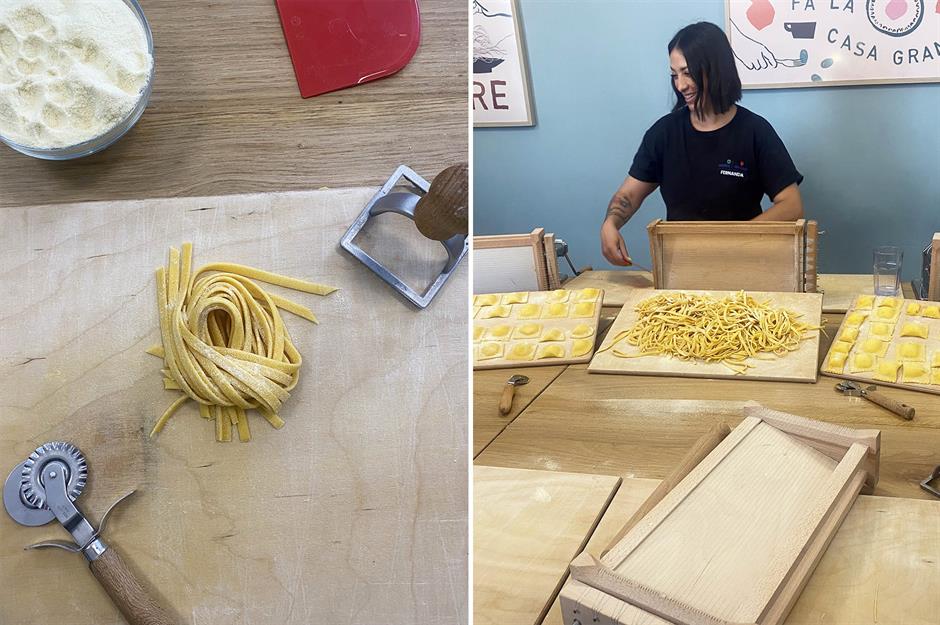
There's no better way to connect to a country than through its food. We highly recommend taking City Experiences' fun and friendly pasta-making class in the heart of Rome's beautiful Trastevere neighbourhood. Guided by enthusiastic chefs, you and a small group of fellow foodies will make two different kinds of pasta, including sauces and fillings, sip Prosecco while you cook, then sit down to enjoy your feast. The classes are family-friendly and even very young children will enjoy playing with the dough.
24. Stroll the streets and discover authentic eats
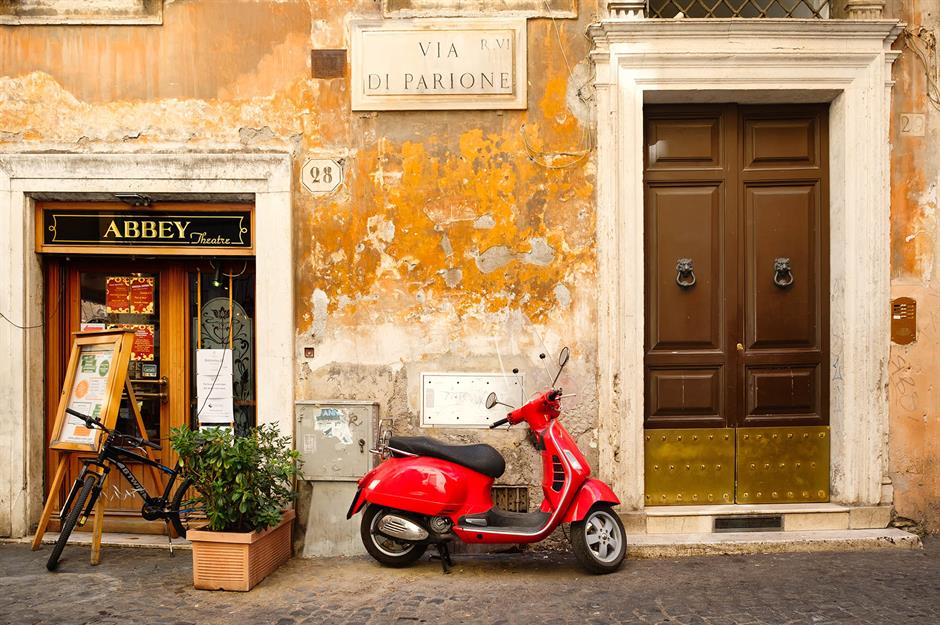
At the end of your cooking class, you're sent on your way with a recipe booklet and a handy list of authentic eateries and shops, so you can skip the tourist traps and eat like a Roman. Don't miss out on a visit to Antica Caciara, in the Trasteverina neighbourhood, to buy a wedge of salty Pecorino Romano cheese from its charming patron, Roberto. He'll even vacuum pack it so it doesn’t stink out your bag on the flight home.
Getting there

Founded in 2020, ITA Airways is Italy’s new flag carrier, replacing the now defunct Alitalia. The airline’s new planes, sparkling in Azzurri blue, fly direct from Rome–Fiumicino Airport to the recently revamped London City Airport, as well as Bristol, Manchester, Newcastle and Glasgow, with business class available. ITA also flies daily routes to seven US cities, including New York, Los Angeles and Chicago, as well as Toronto, Canada.
Alanna Lynott visited in May 2024 and was a guest of Visit Castelli Romani - The official guide to the Castelli Romani.
Loved this? Now discover more underrated small towns in Italy
Comments
Be the first to comment
Do you want to comment on this article? You need to be signed in for this feature